Parachute Riggers 1947
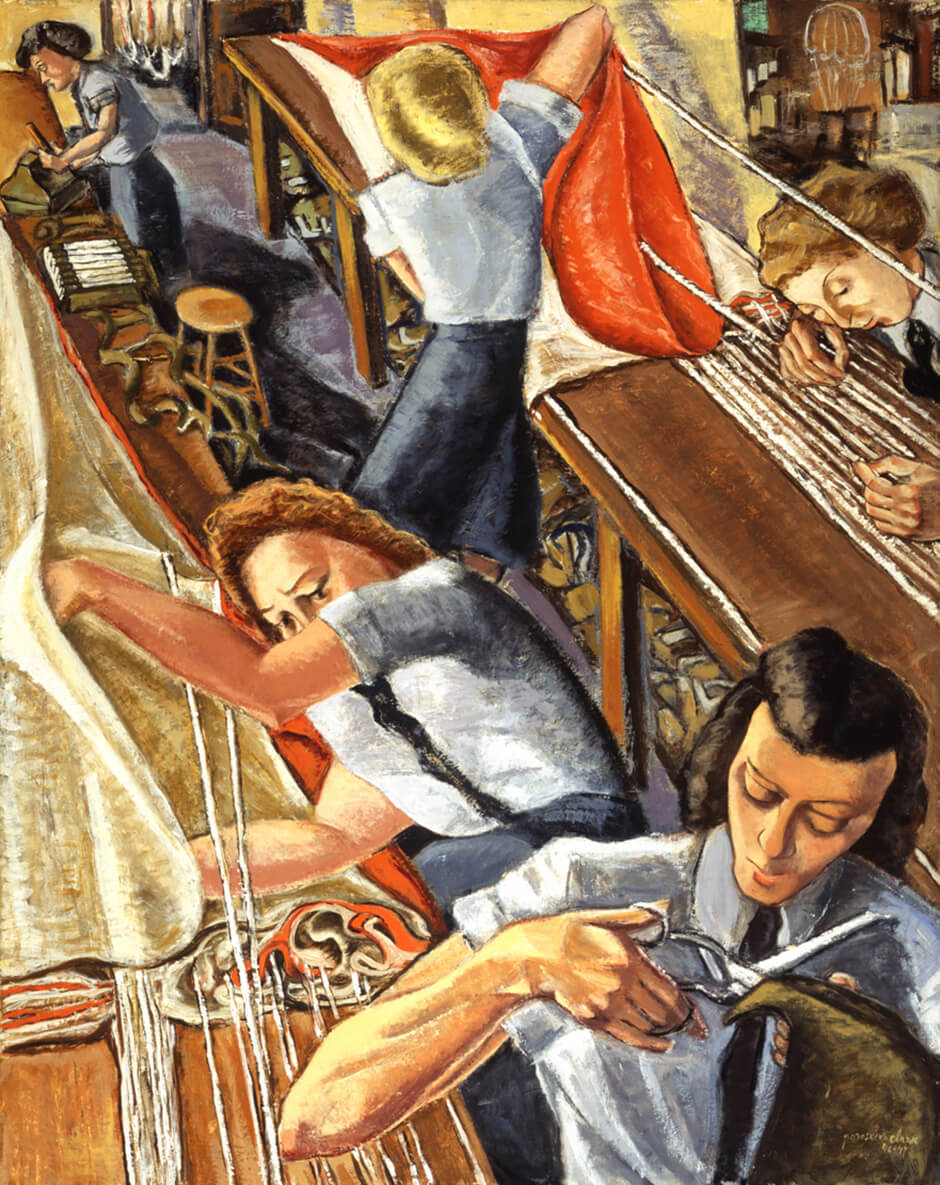
Paraskeva Clark, Parachute Riggers, 1947
Oil on canvas, 101.8 x 81.4 cm
Beaverbrook Collection of War Art, Canadian War Museum, Ottawa
In Parachute Riggers, the dramatic depiction by Paraskeva Clark (1898–1986) of women rigging parachutes in a factory near the airbase at Trenton, Ontario, two diagonal workbenches, viewed from above, vividly split the composition into three parallel bands. The five women, with their animated arm movements, create a dynamic zigzag across the surface. The intense expressions on three of their faces draw attention to their tasks of cutting, folding, and securing the lines of the parachutes they are rigging. By comparison, Parachute Well, 1948, by official war artist Patrick Cowley-Brown (1918–2007), emphasizes the parachutes, reducing the important and skillful role of the woman packing them to a tonal change in the bottom-right quadrant. The contrast shows that male and female artists can view related war work very differently.
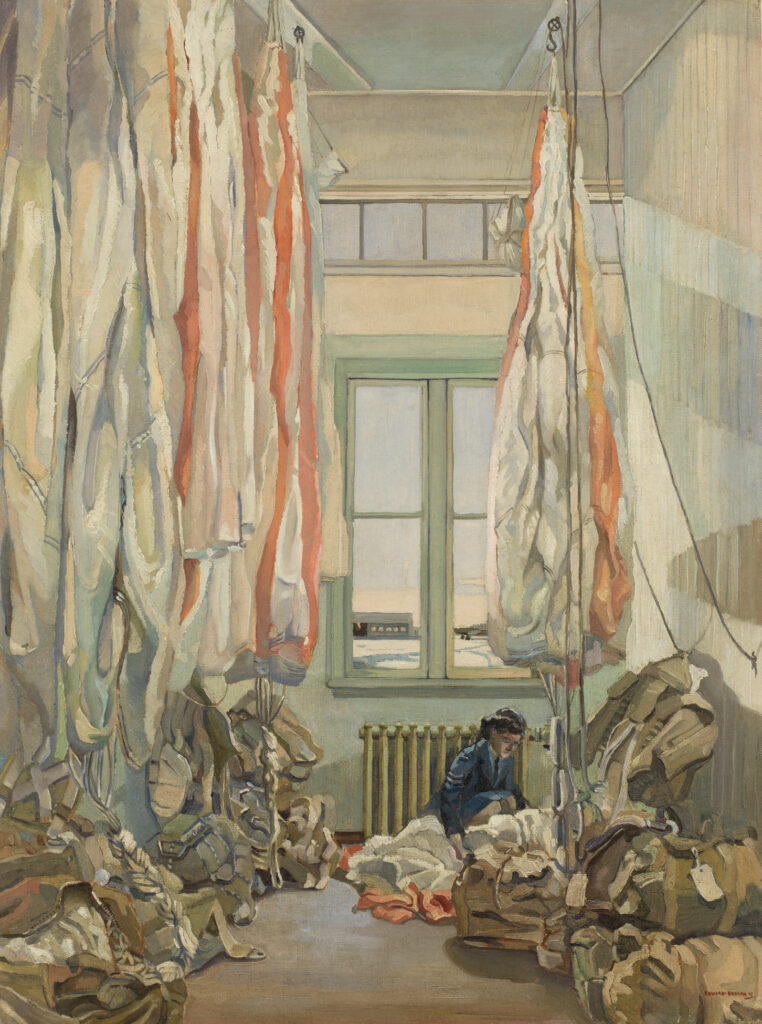
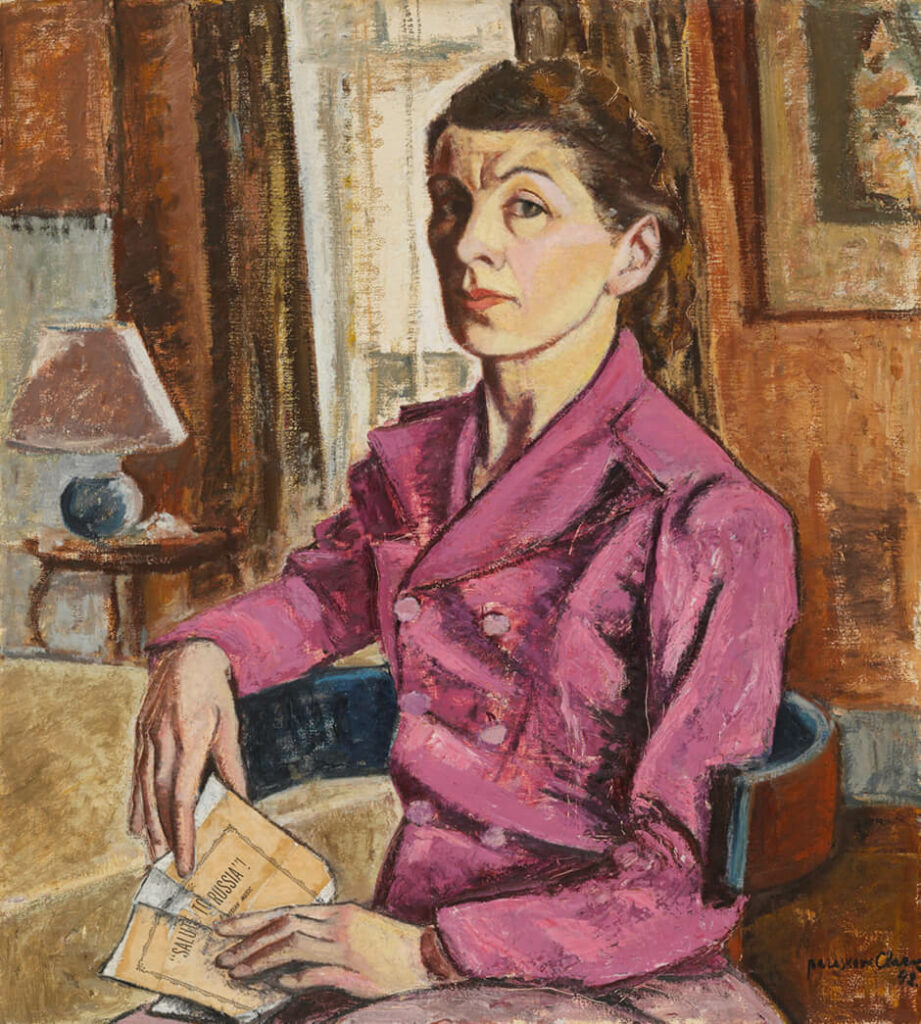
With this painting, Clark completed her commission from the National Gallery of Canada to paint three images of women serving on the home front during the Second World War. She harnessed her training in European modernism and her exposure to aerial photography in magazines to solve a problem that beset many war artists—how to make the routine activities of war interesting for viewers.
Clark was born in Russia, where she studied under Kuzma Petrov-Vodkin (1878–1939) and was influenced by his theory of “spherical perspective.” She moved to Paris in 1923 and, in 1931, arrived in Canada following her marriage. Over the next decade, she painted several works with war-related themes: Presents from Madrid, 1937, her response to the Spanish Civil War; Self-Portrait with Concert Program, 1942, depicting herself with the actual program for a Russian benefit concert; and Pavlichenko and Her Comrades at the Toronto City Hall, 1943, which includes the image of the visiting Soviet sniper Lyudmila Pavlichenko.
With this background, Clark wanted to be appointed as an official war artist, but only serving military personnel were eligible. The sole woman sent overseas was Molly Lamb Bobak (1920–2014), a former private in the Canadian Women’s Army Corps. In 1944, noting that the official Second World War art program had neglected the home front and, in particular, women in the military, the National Gallery of Canada commissioned work from a number of Canadian women artists—including Clark and Pegi Nicol MacLeod (1904–1949)—to redress the omission. Clark welcomed the opportunity and wrote to the gallery’s director: “I found exciting enough the fact that in some of the activities, women performed the jobs, previously done by men and thus, released (perhaps) some men for fighting duties or for war industries.”

 About the Author
About the Author
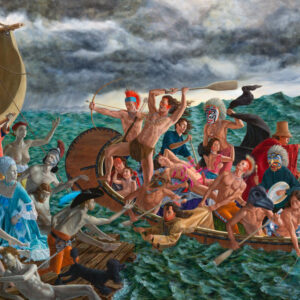 More Online Art Books
More Online Art Books
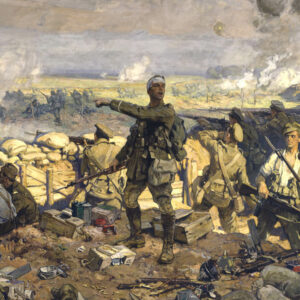 Acknowledgements
Acknowledgements